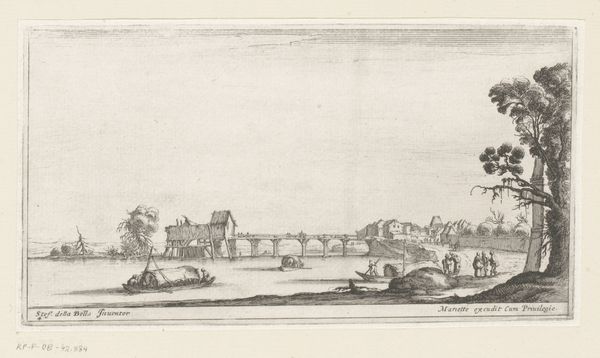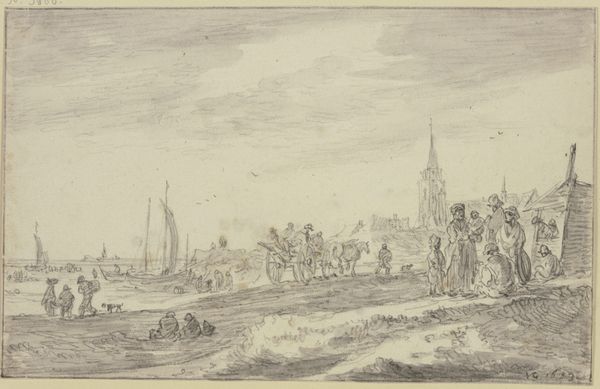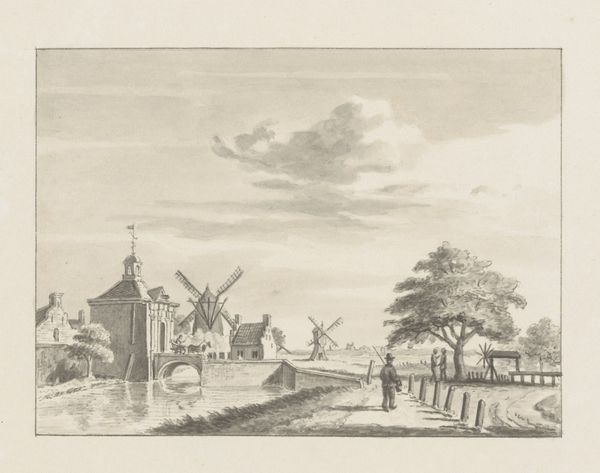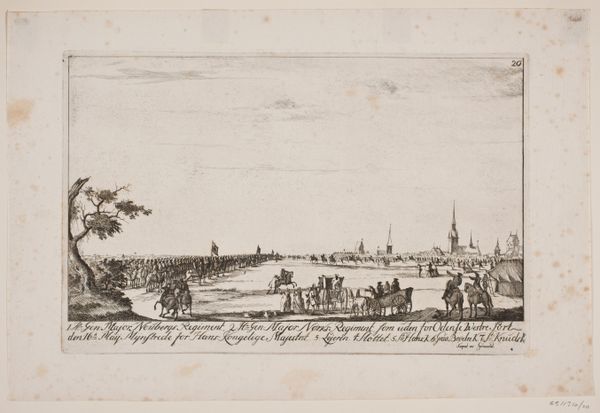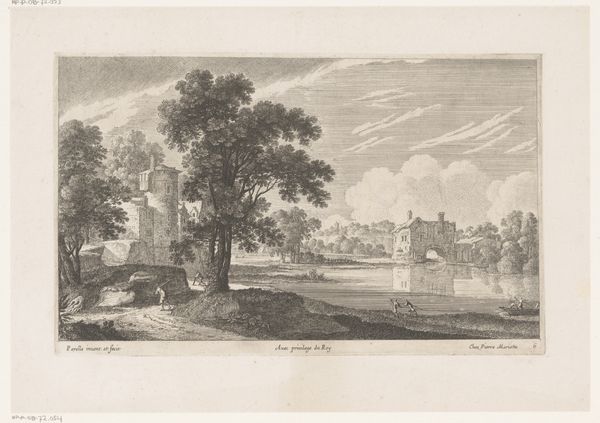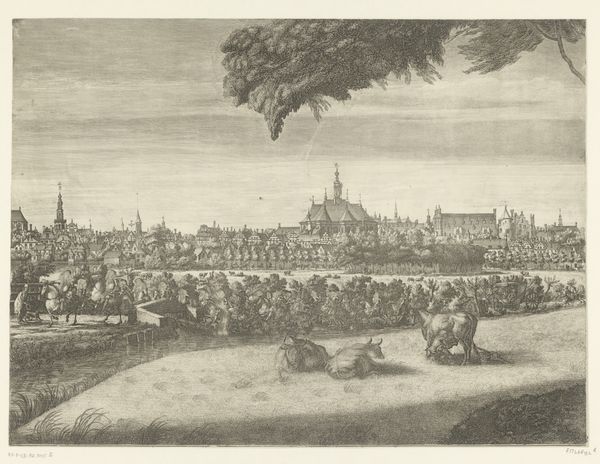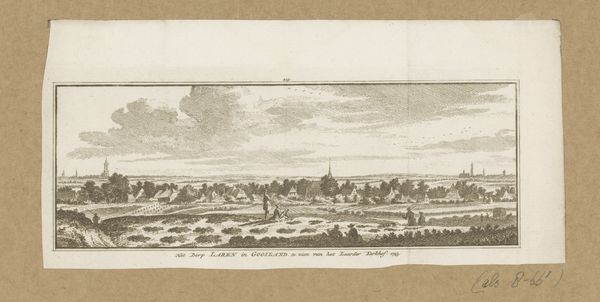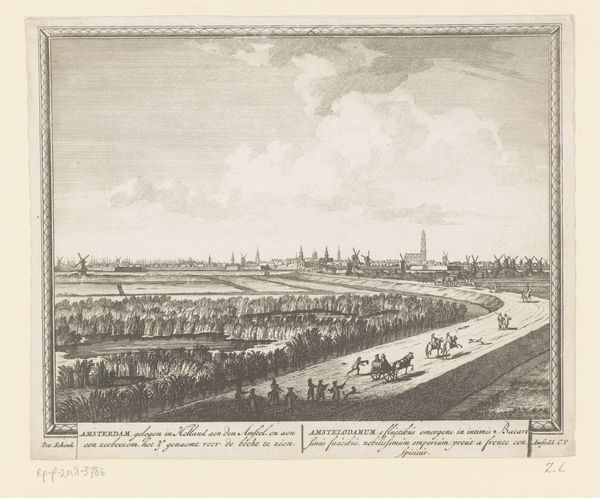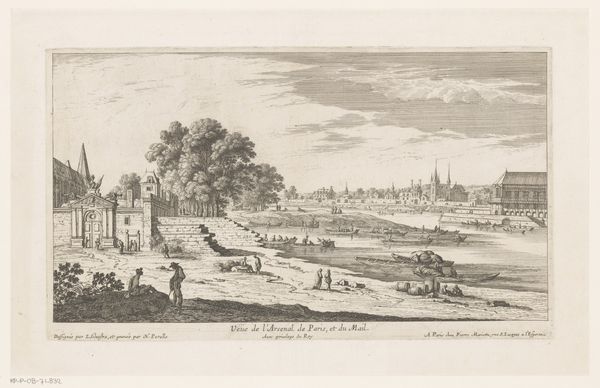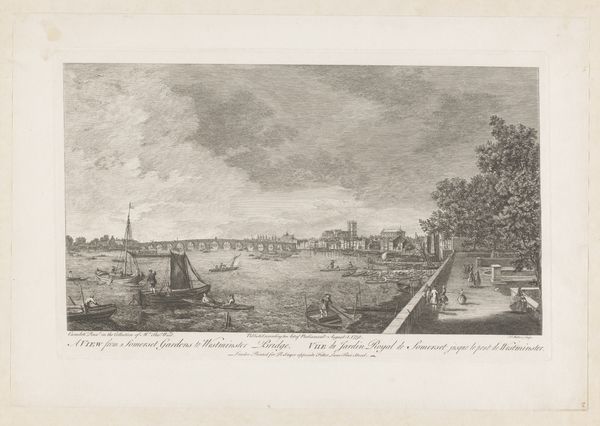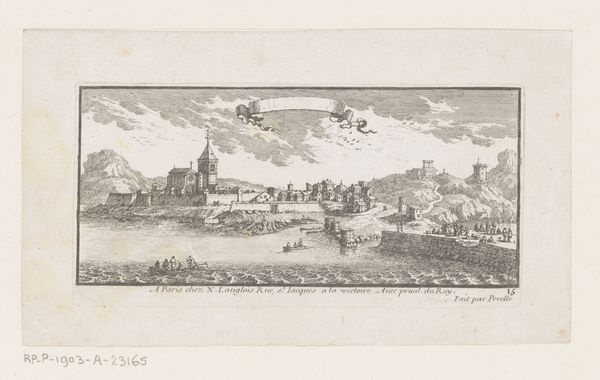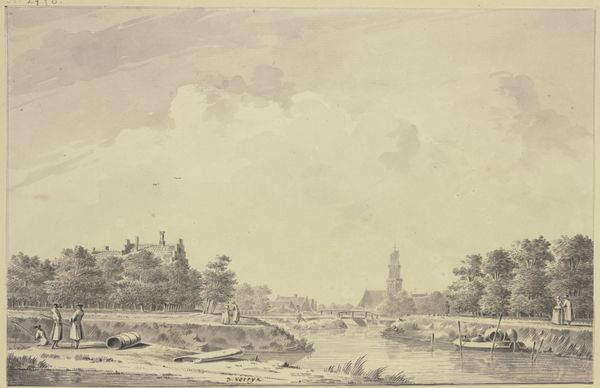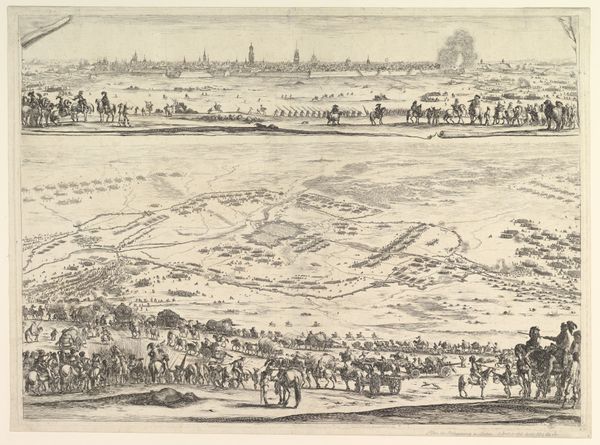
print, engraving
#
aged paper
#
baroque
#
dutch-golden-age
# print
#
old engraving style
#
landscape
#
cityscape
#
history-painting
#
engraving
Dimensions: height 402 mm, width 544 mm
Copyright: Rijks Museum: Open Domain
Editor: Here we have Johannes Kip’s "Wandelrit van prins Willem III buiten Den Haag," an engraving from 1686. It depicts Prince William III riding outside The Hague, and what strikes me is how it manages to convey both grandeur and everyday life in a single image. What are your thoughts on this piece? Curator: This print presents a fascinating convergence of factors: consider the physical production. Engraving as a technique involves skilled labor, the manipulation of metal, the printing press facilitating reproducibility – all crucial aspects of its meaning. It served not just as art, but as a tool for disseminating imagery and ideas within the social fabric. Editor: So you're focusing less on William III himself and more on the… process? Curator: Precisely. This isn't just a portrait of royalty; it's a document reflecting the burgeoning print culture of the Dutch Golden Age. Think about the consumption of prints. Who owned these? How were they displayed? Did it solidify social relations and communicate power through dissemination and reception? Editor: That makes me think about how this kind of print would have shaped public perception. The very act of creating and distributing these images was a form of control and construction. Curator: Indeed! We can see how printmaking enabled new markets and consumer behaviors during this era. It transformed art from unique handcrafted goods into commodities, accessible on a wider scale. Consider, too, the source of materials used - metal ore requiring labor for extraction, for instance. How did these processes affect, and reflect upon, the Dutch colonial system at the time? Editor: It’s a complete shift in perspective for me, seeing it less as just an artistic work, but more as part of larger production and economic systems. Curator: It urges us to ask crucial questions, from material origin to final consumption. We look at who held the power within this artistic landscape and why. Editor: Well, this was very insightful. I'll definitely think about art production more critically going forward. Curator: I hope it encourages a deep-seated sense of inquiry, investigating how art operates beyond its surface-level aesthetics.
Comments
No comments
Be the first to comment and join the conversation on the ultimate creative platform.
